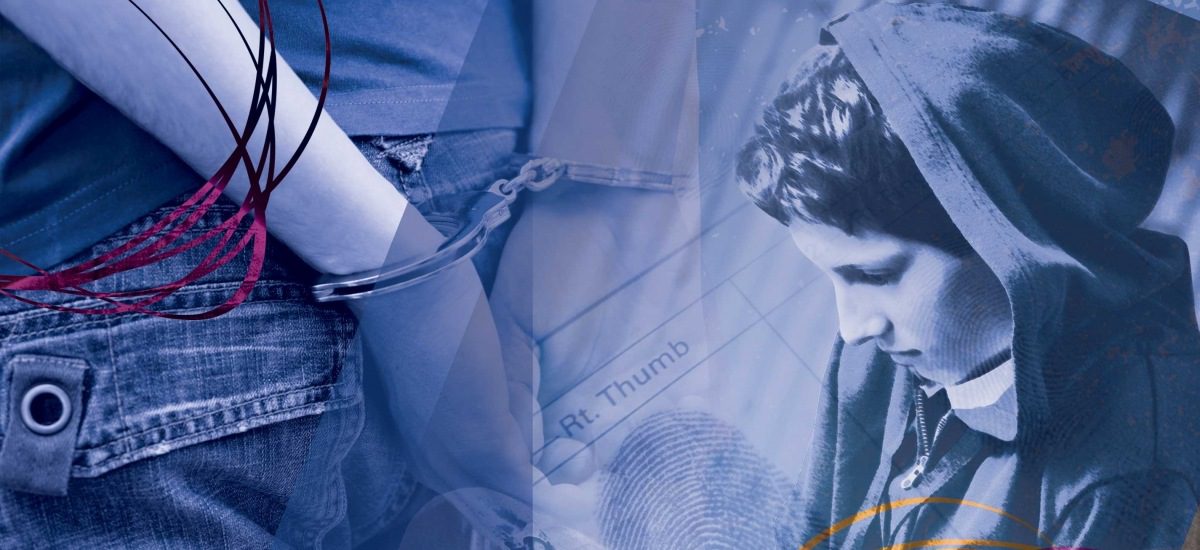It was a bullying incident that, no question, would be considered horrific and cruel in any era.
On a November afternoon, a group of eighth-graders picked a fight with sixth-grade schoolmates after a younger boy scooped up a scooter belonging to an older boy. It ended when two of the eighth-graders – egged on by friends – crouched naked over the faces of their terrified 11- and 12-year-old victims. As one of the 14-year-olds hovered over a younger boy, he passed gas in his victim’s face. His penis briefly touched the boy’s lips before the altercation broke up.
Although the older boys maintained that the act was a “joke” and any contact was unintended, a trial court in Somerset County ruled that their conduct fit within the legal definition of fourth-degree criminal sexual contact.
Labeled sex offenders at 14, the boys were sentenced to consequences that many say did not fit the crime. Under New Jersey’s Megan’s Law, those convicted of sex crimes face a lifetime of public registration, requiring that their names and addresses be listed online – accessible by anyone. The law also severely restricts where, and with whom, young offenders can live, work, attend school or even spend time.
Although the trial judge in the so-called “fart case” agreed that the boys’ motivation was to humiliate and bully, and there was no evidence of a sex crime, he said his hands were tied due to the strict penalties imposed by Megan’s Law.
 While not so different than many of the cases involving children convicted of sex crimes, the harsh sentence for these young offenders made headline news in 2011 – shedding light on a question that few raised publicly in the past: should all juveniles convicted of sex crimes be subject to public registration?
While not so different than many of the cases involving children convicted of sex crimes, the harsh sentence for these young offenders made headline news in 2011 – shedding light on a question that few raised publicly in the past: should all juveniles convicted of sex crimes be subject to public registration?
As the 20th anniversary of Megan’s Law approaches, reform advocates contend that the measure created with the best intentions – to protect the public against the truly dangerous, including rapists and pedophiles – has morphed into the scarlet letter of the Internet age. Online registries apply to all convicted sex offenders, including an untold number of children under 18 who are neither violent nor predators and pose little risk of re-offending.
“The fart case was one that the public could actually rally around,” says Nicole Pittman, a Philadelphia-based national expert on the effects of sex-offender registration on children. “While the acts might be different, the vast majority of children who go on the registry are not committing the [stranger-danger] crimes the registry was intended to protect against.
As high as 90 percent of the acts committed by children are exploratory acts – and they’re not happening with strangers. They’re happening with family, classmates or peers.”
Pittman says public registration has absolutely no effect on preventing these types of acts, but does severely limit the convicted child’s options for the rest of his life.
“A lot of times, kids on the registry cannot finish school in a regular setting and have to go to reform school, be homeschooled or taught online,” she says. “It breaks up families and completely allienates the child. Whatever issues the child had before the offense just get exacerbated.”
There were 747,000 nationally registered sex offenders in 2011. And while there are no comprehensive statistics on the number of people who were under 18 when they were required to register – because national statistics generally do not separate youth offenders from others – Pittman has spent the last two years interviewing hundreds of sex offenders who were younger than 18 when they were convicted. She also spoke with defense lawyers, judges and law enforcement officers across 20 states for a recently published Human Rights Watch report: “Raised on the Registry/The Irreparable Harm of Placing Children on Sex Offender Registries in the U.S.”
In recent years, studies have shown that young sex offenders have the lowest re-offense rates in the justice system. Moreover, young offenders face far better prospects if given appropriate treatment, interventions and education as opposed to harsh punishment. On the other hand, there is ample research on the harmful effects of automatically requiring young offenders to register; they are stigmatized, publically humiliated, and become depressed and even suicidal.
In New Jersey and nationwide, the registry includes children as young as 8 years old who are then subject to lifetime sex-offender registries.
It also includes teens who are considered rapists simply because of their age, including 14-year-olds convicted of having sex with their 13-year-old boyfriend or girlfriend, Pittman says. Under the law, 14 is considered the age of sexual consent. Similarly, an 18-year-old can land a sex offender designation for having sex with his 15-year-old girlfriend.
Sometimes a relationship that starts off romantic lands in the courts when bullying or jealousy is involved, she says. These cases are likely on the rise, she believes, due to New Jersey’s two-year-old anti-bullying law, which can elevate an incident involving sexual allegations in school to a crime.”
“If certain incidents occur, schools are now required to report it to the police, which instantly criminalizes behavior that occurs in schools,” says JC Lore, a criminal lawyer and a professor at Rutgers School of Law–Camden. “As a result, incidents that may have been handled by educators two or three decades ago can no longer be seen as discipline issues; they’re now handled by the courts. It’s created a kind of school-to-prison pipeline.”
Other cases involve children who have impulse control issues or who are simply unaware of societal norms as a result of learning disabilities or social development disorders like autism.
A 1996 case involved a 10-year-old boy who was put on the registry after he pled guilty to sexual assault of a child. “J.G.” testified that he had “penetrated” his 8-year-old cousin although there was no evidence of penetration. On appeal, J.G.’s attorney argued the boy understood penetration to mean “rubbing against someone.” Moreover, his first language was Spanish, and he was classified as both multiple-handicapped and perceptually impaired. The lawyer won a partial victory as J.G. was taken off the public registry, but was still required to stay in contact with local law enforcement.
“In a lot of cases, we’re not even talking the same language as the kids, yet we’re giving them the exact same consequences as adults, and sometimes even more,” Pittman says.
The juvenile justice system was created a little more than 100 years ago under the philosophy that delinquent children should be treated as vulnerable, requiring care and treatment different from adult offenders, explains Lore, founding co-director of the Children’s Justice Clinic, the first Rutgers Law clinic to focus on children. One of the major tenets was to help troubled youth reintegrate into society. As a result, juvenile offenders could petition to have their records sealed when they hit 21.
But a major shift in thinking about juvenile crime occurred in the 1990s, explains Lore. Then-Princeton law professor John J. DiIulio Jr. advanced a popular theory of a rising class of “super-predator kids.” This ushered in new laws bent more toward incarceration than rehabilitation, Lore says. Few politicians questioned tougher sanctions, lest they seem “soft on crime.”
Around the same time, sex offender laws took root after several high-profile murders of children. The federal 1994 Jacob Wetterling Act, named after an 11-year-old taken from his home and never seen again, required states to create individual sex-offender registration programs.
Laws requiring public dissemination came with the 1994 rape and murder of 7-year-old Megan Kanka. The Mercer County girl was lured into a neighbor’s home with the promise of seeing his puppy. Only after the horrific crime occurred did her family learn that their neighbor, Megan’s killer, was a convicted sex offender who had served six years in prison for aggravated assault and attempted sexual assault on another child.
Megan’s Law was passed in New Jersey an unprecedented 48 days later, creating a notification system to alert the public about sexual offenders and to severely restrict their housing, education and employment opportunities. In later years, more measures have honed sex offender laws, including the 2006 Walsh Act named for Adam Walsh, who was abducted and killed in 1981. He was the son of John Walsh, who later became the host of television’s “America’s Most Wanted.” The act established a national system for sex offender registration.
Under the Walsh Act, juvenile sex offenders cannot have their cases sealed at 21, meaning their case stays on record for the rest of their lives.
Yet in the nearly two decades since such laws went on the books, research has shown that adolescent offenders are seldom pedophiles. They are less likely to have deviant sexual interests, but more likely to be socially underdeveloped and to act on impulse, especially if they themselves have histories of being abused or have disabilities, experts say. It is also now widely accepted that children’s brains are not developed enough to understand the long-term consequences of crime, says Lore. That was among the motivations of the U.S. Supreme Court in 2005 when it outlawed the death penalty for crimes committed before the age of 18, he noted.
Meanwhile, numerous studies estimate the recidivism rate among children who commit sexual offenses to be between 4 and 10 percent, compared with a 13 percent rate for adult sex offenders and a national rate of 45 percent for all crimes, according to Human Rights Watch.
Moreover, in 2009, New Jersey released a study conducted by an independent scientific assessment about the effects of Megan’s Law. That study concluded the law has not reduced the number of re-arrests for sex offenses, nor has it had any demonstrable effect in reducing the number of sex offenses. Yet the cost of implementing the law has risen drastically since 1995, jumping from $560,000 in 1995 to $3.9 million in 2006 based on data from 15 of 21 counties.
While Megan’s Law and other notification measures remain in full effect, Lore says the attitudes of those involved in the juvenile justice system in Pennsylvania and New Jersey have shifted. In many cases, the courts are willing to place child offenders in so-called diversionary programs for treatment and education in lieu of a lifetime Megan’s Law designation, Lore says.
“Most of the judges really try to do what’s right for kids,” agrees Craig Becker, a Marlton-based criminal defense attorney who has represented numerous juvenile clients facing Megan’s Law offenses.
In most cases, he says, the judges will allow a charge to be plea bargained to a lesser, non-Megan’s Law offense if all parties involved, including law enforcement officers, family members, educators, mental health experts and the child agree to work together. The weight of the court order compels professionals to stay in constant communication and united in the treatment, he says.
Buzz Mingin, a Southampton-based educational and behavior consultant who often works in tandem with Becker, says most of their juvenile cases are kids who either have disabling conditions, such as autism or ADHD, or just made a bad decision without regard to consequences. Both types of offenders are highly treatable with the right coordinated care.
The treatments he designs are individual, with the goal of helping the child understand the motivation behind the act, why it got him in trouble and more acceptable behaviors.
Among recent cases, Mingin says, he treated an adolescent with autism who was low-functioning. The child was taken out of school in handcuffs for touching a girl inappropriately.
“This was clearly a manifestation of his conditions,” says Mingin, who has published several books on decision-making and social skills development for children, educators and parents. “This kid didn’t understand personal boundaries, he couldn’t draw consequences and doesn’t have good social judgment overall. His gesture could have been interpreted as just trying to communicate with this person.”
As part of his treatment plan, the boy’s parents were trained to set up boundaries and a more structured environment. The boy was also specifically taught what to do versus what not to do to gain the attention of someone of the opposite sex, Mingin says.
Other clients may be more savvy and street smart but may have a mood disorder, depression, anxiety or impulse issues, he adds. They may be carrying a lot of anger and have committed their sex crime because they themselves were abused or mistreated. In these cases, it is important to get the child to understand the root of his anger, perhaps remove the child from an unhealthy environment and get him into therapy.
While most judges are willing to divert children from Megan’s Law designation in favor of such treatment, Mingin says the approach is not always welcomed. Among reasons judges may not be willing to accept a lesser offense is if the juvenile has a prior criminal record or if he is not cooperative.
“If it’s a sexual crime and the guy is not cooperating, he’s done,” Mingin says. “The judge is going to come down hard on him.”
As for the 14-year-olds convicted in the so-called fart case, Pittman says they were eventually able to escape Megan’s Law designation and have their cases dismissed – not based on the merits of the case but on technicalities.
One of the boy’s convictions was reversed based on ineffectual legal counsel. The boy’s trial lawyer admitted to underestimating and misunderstanding the nature and complexities of the charges. The second boy had pled guilty but was entitled to have his guilty plea withdrawn because the judge failed to adequately explain the consequences of sex offender registration.
“The win in this case was not based on the merits of the sex offense but due to the fact that procedure wasn’t followed,” Pittman notes.
While a true victory would have exempted juveniles from public registration laws, the case at least put the issue in the public eye, Pittman says.
“Like most offenses, this was child behavior that’s treatable,” she adds. “We just make laws that make it illegal activity.”














